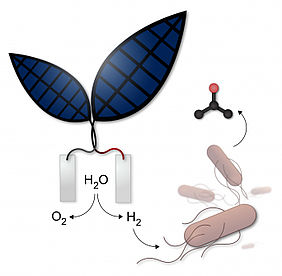Three years ago, time flies!, I wrote a post on a research carried out at MIT on a bionic leaf, a leaf that was modified with carbon nanotubes to increase its capacity to convert light into chemical energy. During these three years research has progressed in several research labs and has resulted in the capability to "program leaves" (plants in general) to steer their chemical processes to produce some specific substances.
As an example, researchers at Harvard managed in 2016 to create an artificial leaf leveraging on hydrogen eating bacteria to produce fuel with a 10% efficiency (compare this with a 1% efficiency of the best plant).
Now that same team at Harvard has announced a refined artificial leaf to create fertiliser, by chemically combine sunlight, water and air (supplying the required nitrogen). This "leaf" uses bacteria as chemical labs.
Fertilisers have changed the world. In the early years of the last century many felt that the Earth could not sustain a population growth beyond 2 billion people (at that time the population was around 1.6B, the double of the population in 1750) and indeed the farming technology of the time resulted in crops that would not be sufficient to feed a larger population. Fertilisers did the trick multiplying the yield.
However distributing and using fertilisers in many poor regions in the world (which basically overcome the need for crops rotation) is a challenge. Hence the value of this result.
By programming bacteria to produce fertilisers it is possible to increase the yield of farmland also in those areas. In the clip you can see the result on plants, when grown on a soil fertilised with this artificial leaves.







